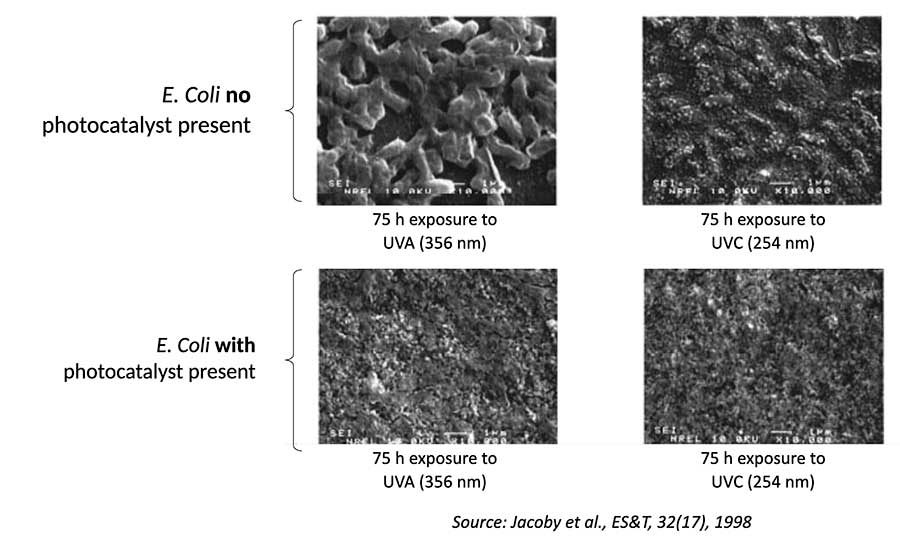Photocatalytic disinfection has been shown to inactivate a variety of microorganisms including viruses, fungi, algae, protozoa, gram-negative and gram-positive bacteria, prions, and microbial toxins.
The mode of action of photoactivated metal oxides includes (a) depletion of coenzyme A by dimerization and subsequent inhibition of respiration for Gram-positive and Gram-negative bacteria, (b) membrane and cell wall damage as evident in e.g., studies reporting leakage of cellular components (K+), (c) lipid peroxidation by reactive oxygen species (ROS), and (d) damage to DNA, likely a late-event after rupture of cell membrane and death. It is reported that PCO is capable of complete mineralization of bacteria on air filters (see figure below).
MOST provides materials that can function as antimicrobial surfaces. For further information, just send us a note.
